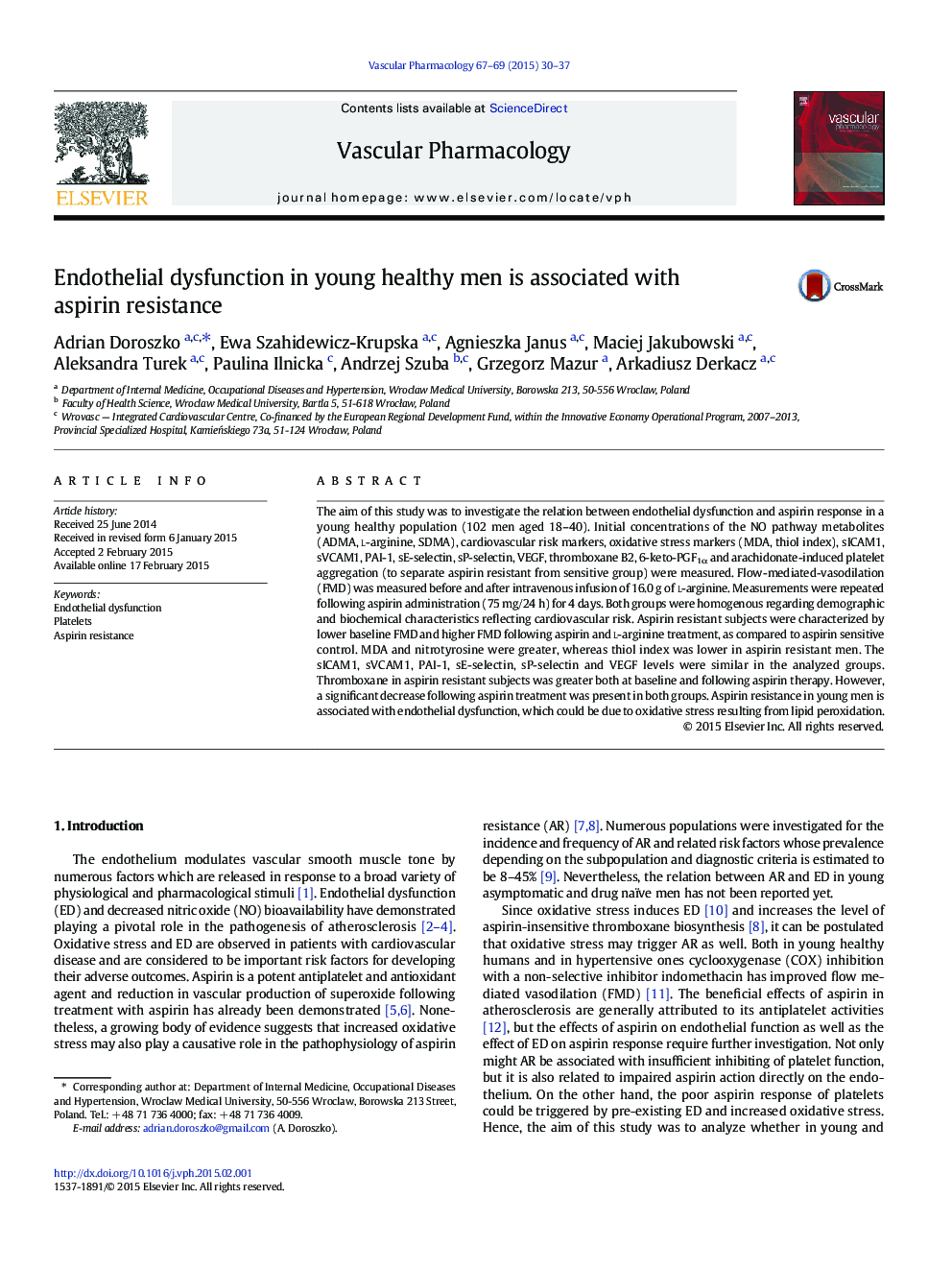| Article ID | Journal | Published Year | Pages | File Type |
|---|---|---|---|---|
| 2574123 | Vascular Pharmacology | 2015 | 8 Pages |
The aim of this study was to investigate the relation between endothelial dysfunction and aspirin response in a young healthy population (102 men aged 18–40). Initial concentrations of the NO pathway metabolites (ADMA, l-arginine, SDMA), cardiovascular risk markers, oxidative stress markers (MDA, thiol index), sICAM1, sVCAM1, PAI-1, sE-selectin, sP-selectin, VEGF, thromboxane B2, 6-keto-PGF1α and arachidonate-induced platelet aggregation (to separate aspirin resistant from sensitive group) were measured. Flow-mediated-vasodilation (FMD) was measured before and after intravenous infusion of 16.0 g of l-arginine. Measurements were repeated following aspirin administration (75 mg/24 h) for 4 days. Both groups were homogenous regarding demographic and biochemical characteristics reflecting cardiovascular risk. Aspirin resistant subjects were characterized by lower baseline FMD and higher FMD following aspirin and l-arginine treatment, as compared to aspirin sensitive control. MDA and nitrotyrosine were greater, whereas thiol index was lower in aspirin resistant men. The sICAM1, sVCAM1, PAI-1, sE-selectin, sP-selectin and VEGF levels were similar in the analyzed groups. Thromboxane in aspirin resistant subjects was greater both at baseline and following aspirin therapy. However, a significant decrease following aspirin treatment was present in both groups. Aspirin resistance in young men is associated with endothelial dysfunction, which could be due to oxidative stress resulting from lipid peroxidation.
Graphical abstractFigure optionsDownload full-size imageDownload high-quality image (157 K)Download as PowerPoint slide
